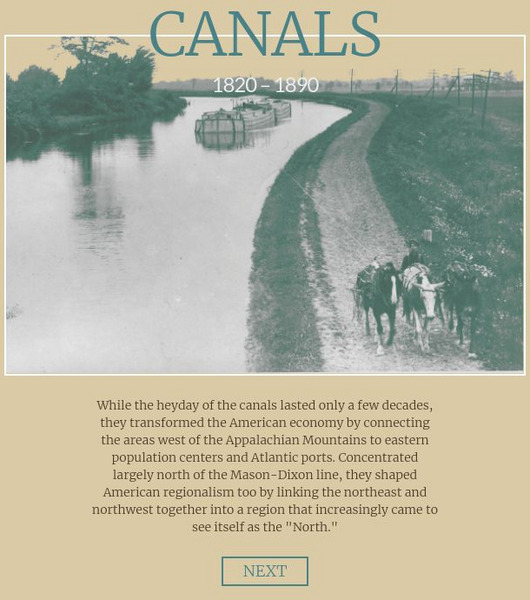Livaudais-Baker English Classroom
Kindred
This first in a series of four resources is designed for instructors to use Octavia E. Butler's Kindred in their classes. The packet includes an overview of the unit, a day-to-day calendar, links to background articles, and reading...
University of Virginia
Student Page: Uncle Tom's Cabin and American Culture
History sleuths read articles for and against Uncle Tom's Cabin, examine visual images, print responses, and multi-media tomitudes to better understand the impact of Harriet Beecher Stowe's novel on American culture prior to the Civil...
National Endowment for the Humanities
Frances Ellen Watkins Harper’s “Learning to Read”
Frances Ellen Watkins Harper's poem "Learning to Read" is the focus of a lesson that teaches middle schoolers how to do a close reading of a text. The lesson introduces them to a brief biography of the poet, includes a video reading, and...
Livaudais-Baker English Classroom
Kindred Introduction
A 16-slide PowerPoint presentation introduces readers to the themes, motifs, and literary devices used by Octavia E. Butler in her time-travel, first person slave narrative.
Livaudais-Baker English Classroom
Kindred Unit Project
To conclude a unit study of Octavia E. Butler's Kindred, groups use MovieMaker or the class website to publish an original story about slavery in America. The detailed project assignment sheet includes a list of possible topics,...
National Endowment for the Humanities
Frederick Douglass’s Narrative: Myth of the Happy Slave
The firsthand accounts of what it was like to be an enslaved person in the mid-1800s riveted a nation and the issue ultimately led to civil war. Using excerpts from Frederick Douglass's autobiography, budding historians examine what it...
Annenberg Foundation
Antebellum Reform
Scholars investigate the Antebellum period in the United States in an engaging lesson. Groups analyze technological, religious, economic, and social changes occurring during the time period prior to the Civil War. Using their new...
NET Foundation for Television
1850-1874 The Kansas-Nebraska Act
How the Kansas-Nebraska Act created Bleeding Kansas is complicated—until scholars research and examine documents from the time. After completing activities that include mapping, photo, document analysis, and discussion, learners...
Library of Virginia
Emancipation and the Thirteenth Amendment
Why didn't the Emancipation Proclamation free all slaves? Young historians study primary source documents including Lincoln's proclamation and the 13th Amendment to the United States Constitution. Groups also investigate the three...
Library of Virginia
Life as a Liberated People
Imagine having no control over your life and then suddenly having to provide for yourself. Such was the challenge faced by many American slaves after emancipation. Class members are asked to consider these challenges are they examine...
Library of Virginia
Antebellum Freedom
From indentured servitude to involuntary race-based servitude, slavery has taken many forms in American history. Class members examine three manumission petitions that reveal how the rights of African Americans and African American...
Curated OER
Antebellum Revivalism and Reform
A gold mine for American history teachers, this presentation cascades through the middle of the 19th century with the central themes of moral and social reform. Between the blossoming Mormon church, the tightening of the Temperance...
Curated OER
Manifest Destiny
Complete with maps, photographs, and historical documents, this presentation would be a great resource throughout a unit about mid-19th century America. Manifest Destiny, Texas Independence, the Oregon Trail, and the Mexican War are all...
Curated OER
Antebellum American Art
Dividing the art of the Antebellum period into several different genres, this vibrant presentation is sure to get your students' attention. It takes your students on a walk through an art museum with famous paintings, architecture, and...
Curated OER
The Antebellum South
Your history students will be on the edges of their seats during this fascinating presentation, which details the abolition movement and slave life during the Antebellum period in the American South. Students will be left agape at the...
Curated OER
Social Studies: The Ideology of Slavery
Students examine the development of racial stereotyping beginning with the antebellum years. They research how blackface minstrel songs reinforced the antebellum mindset of African-Americans. Secondly, students investigate "Uncle Tom's...
Curated OER
Antebellum North Carolina
Eighth graders examine pictures & documents relating to the Hayes Plantation (Edenton, NC). They also use various maps of North Carolina to help them analyze how James Cathcart Johnston used, modified and adapted to the physical...
Curated OER
Building New York
Eleventh graders examine the role African Americans played in the expansion of New York. In this American History lesson, 11th graders compare and contrast the images of a wealthy, free black against a black who was poor and enslaved. ...
National First Ladies' Library
Social Studies: Who Burned Down Barnum's Museum?
Learners examine the social conflict of the 19th century and the destruction of the American Museum. In pairs, they conduct Internet research and attempt to solve the mystery of who burned down the museum. Clues to the mystery are found...
Curated OER
Slave Ship: Carrier of Destiny
Fifth graders research topics related to slavery. They visit area museums, and the Arkansas Arts Council presents cultural experiences. They discuss and internalize the plight of people sold into slavery.
Curated OER
Maroon Communities
Students examine political and religious factors that influenced English, Spanish, French, and Dutch colonization of the Americas, how slavery shaped social and economic life in the South after 1800, and elements of slavery during the...
University of Richmond
American Panorama: Canals
Excellent resource maps the growth of canals and economic development in the nineteenth-century by presenting data about the commodities and products that moved across the canals and shows the spaces that canals connected.























